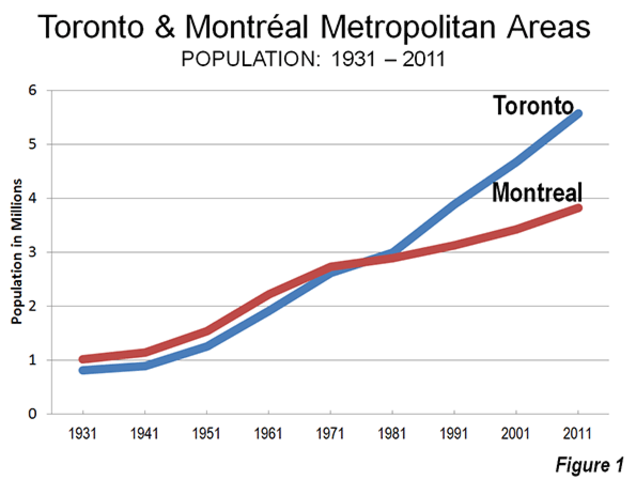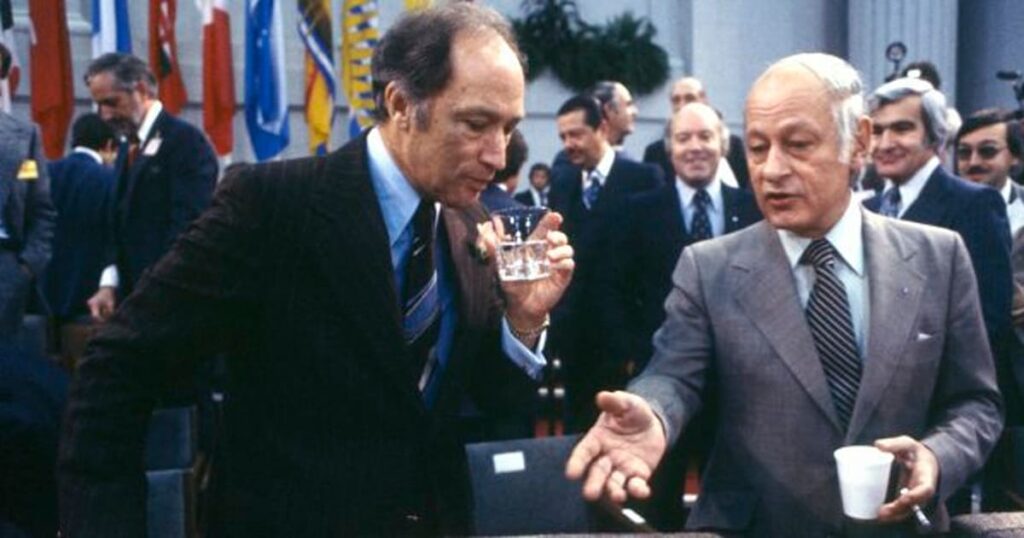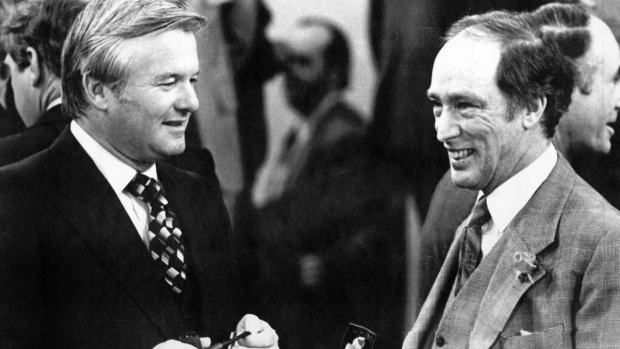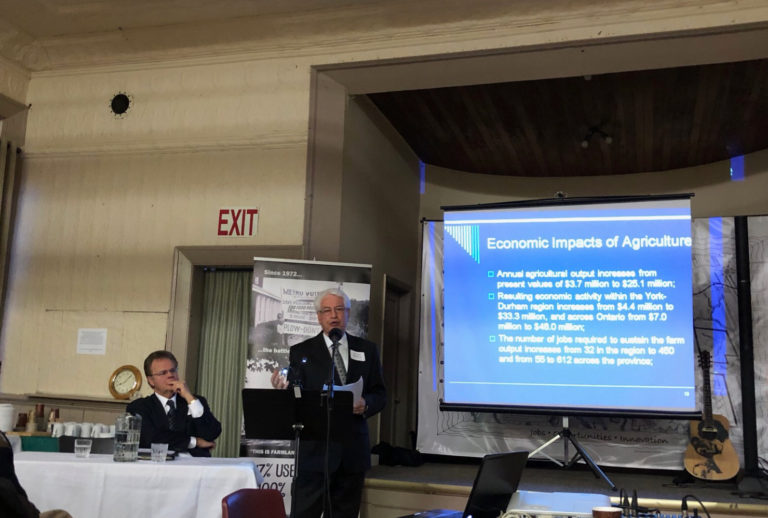The history of the land set aside for Pickering Airport is a fascinating window into the development of Canada and the Greater Toronto Area (GTA). It is often presented as a dark tale of the politicization of infrastructure development, regional rivalry, and misinformation. It has been referred to as “the other Mirabel” for political and dramatic effect.
The reality is that the cancelation of the airport in 1975 and the retention of the land for a future airport when needed, is a story of good governance. A vision of the politics of inclusion and free market driven economics of Bill Davis, the Premier of Ontario from 1971 to 1985, that ushered the province into a golden era of growth.
Although they are linked by a federal action, Mirabel and Pickering are in fact polar opposites. While Mirabel was a cautionary tale of the limits of big government, Pickering Airport is a tale of another vision of development. It is an enlightening story of a bullet dodged thanks to Mirabel’s example, an enlightened governance and a promise to Ontario’s future. That future has now arrived but is in jeopardy due to delay and inaction.
Calling Pickering Airport “the other Mirabel” would make sense to only those of us old enough to remember its history. Mirabel, an airport built in the 1970s north of Montreal, is 500 km away from Toronto. The Pickering Airport has not yet been built, but land has been set aside for it just east of Toronto in North Pickering. It is a comparison easily misunderstood unless you understand its back story.
The 1970s was a decade of upheaval in eastern Canada caused by the dawn of the jet age, the FLQ terrorist attacks (October Crisis 1970) and the growth of the independence movement in Quebec. These factors fueled a regional rivalry between Toronto and Montreal that echoes to this day.
A shift in Quebec provincial politics gave the GTA and Ontario an economic boost of historic proportions. The first was Bill 22 in 1974 that made French the official language of Quebec and compelled new immigrants to enroll in French schools. The second was the election in 1976 of the Parti Quebecois under the leadership of Rene Levesque (Premier of Quebec 1976-1985) who took this further with the Bill 101 language law. Together this encouraged the movement of Quebec’s Anglophone population, as well as new immigration, away from Montréal to the GTA.

At the beginning of the 1970s, Toronto was a relatively quiet, industrialized, mostly Anglo-Saxon city. By the end of the decade, it had been transformed into Canada’s financial capital through the exodus of people and corporate head offices from Montréal. In a single decade Toronto was jolted with enormous economic power from the arrival of waves of new investment and talented ethnic populations from around the world. This jump started an economic cycle that has never stopped. Through economic booms and recessions, every year an increasing number of talented, educated and enthusiastic new immigrants have arrived in the GTA (called the Golden Horseshoe by locals) seeking the Canadian dream. With them came private investment, trade and commercial opportunities linking the GTA to the world economy.
So profound was the change that it became a target of social commentary. One well known joke was that Toronto’s famous Yonge Street should be renamed “René Lévesque Way” in gratitude to the Quebec Separatist leaders’ jump start of the Ontario city. This transformation was driven by free enterprise and freedom of movement, not government mega projects. It was further enabled by a shift to aviation as the primary means of passenger travel and the transportation of high value goods.
While this political and economic upheaval was underway, the federal government tried to harness the opportunities that global aviation created. It decided that the best way to connect Canada to the rapid growth of the global economy and its lynchpin, aviation, was by investing in huge new airports. This idea sprang from the historical success of Canadas previous nation-building transportation mega projects, such as the national railroad and, later, the St Lawrence seaway (opened in 1959). To many federal politicians worried about national unity, weaving Canada together with government funded aviation mega projects made perfect sense. The first of these new airports was to be Mirabel.

The idea of building a new airport in Mirabel was as much a political decision as it was an economic one. It was funded completely by government at great expense to the taxpayer. The construction of the airport was meant to be a technical showcase of Canadian expertise connecting Montreal to the rest of Canada and the world.
Instead, Mirabel highlighted what can go wrong in a command control economy when big government pushes big projects for political purposes. The airport incurred enormous cost overruns and corruption scandals that was the subject of investigations by the RCMP. It was configured as a passenger airport to replace Montreal’s Dorval airport (now called Trudeau), but Dorval never closed. Worse, the province of Quebec had neither the motivation or money to build a new highway to the airport or extend passenger rail service from Montreal to the Mirabel.
As Canadas economic center of gravity was shifting 500 kilometers west to Toronto, Mirabel sat barely used for decades. It turned out that Montrealer’s and the businesses that relied on aviation loved Dorval’s proximity to the city.
Today Mirabel has finally found its calling as a utility airport, home to billions of dollars a year of aviation manufacturing activity and thousands of jobs. This includes the Airbus 220 and Pratt and Whitney manufacturing plants. As an active commercial pilot, I have flown into Mirabel multiple times a year for years and can attest that it is overbuilt for its current utility airport role.
In a follow-on effort to Mirabel, the Canadian Federal government, under Prime Minister Pierre Trudeau, funded the expropriation of land for a similar airport near Toronto. With Mirabel highlighting the risks of big government picking winners and losers, enthusiasm for this approach died quickly in Ontario. The then Conservative Premier of Ontario, William Davis, never a fan of big government, saw the opportunity differently than the Prime Minister. He asserted the Province’s growing power by refusing to fund the road and sewer infrastructure needed to support Pickering airport. The uproar from local civic leaders and the landowners forced to sell to the government helped strengthen his hand.

The local landowners created a group called POP (People Or Planes) lead by Charles Godfrey. He would later be elected as the NDP (New Democratic Party) MPP in the riding of Durham West in 1975. In 1977 he lost the election to the conservative party candidate and returned to private life.
In 1975 I was still wearing bell bottom jeans in high school. But even to high school students, the political forces, and the stark choice was obvious. Was Canada to be based on a free enterprise driven economy open to a world of immigration and private investment? Or centralized in the hands of big government, isolationist sentiments and monopolistic corporate power? Two great men, Trudeau and Davis, both now gone, where at the center of this debate.
I remember trying to make sense of the national debate over big government mega projects and free market capitalism. I also remember being surprised by how short the prime minister was in real life when listening to a live speech.
When Premier Bill Davis stood up to Trudeau’s Liberal vision with one of his own, the Prime Ministers response was classic Trudeau.
“ …happy to spend the $400 million slated for Pickering elsewhere in the country”.
(Reference, the Paper Juggernaut, by Walter Stewart, page 152).
The project was shelved by mutual agreement of the Canadian Federal and Ontario Governments in late 1975, the same year that Mirabel opened. Ottawa finally listened to local leaders, shelving plans to build a mega airport in Pickering. Instead, over the years, it funded the incremental build-out of Malton Airport (now called Pearson).
The land purchased for Pickering Airport was set aside for future economic development once growth in the GTA would make it profitable. The Ontario government’s associated role in building a new supporting community in nearby Seaton with its all-important road and sewer access was suspended. While an effort was made to restart the project ultimately the federal and provincial governments agreed to cocoon the project.
For four decades Toronto’s growth continued to accelerate creating the most densely populated and industrialized area in Canada. Montreal fell far behind. In 2004 local GTA aviation and civic leaders, fearful of the economic effect of eventually running out of capacity at Toronto Pearson airport, prodded the planning of a new airport on the land set aside in Pickering. This time the effort was driven by free market economics and decades of practical experience with modern aviation.
A new refined plan enabled the federal government, led by conservative Prime Minister Stephen Harper, to release 5000 acres of the land set aside for the airport in 2013. This was reassigned to Parks Canada, helping to create the Rouge National Urban Park. 5200 additional acres was transferred in 2015. The remaining 9600 acres were retained for development of a new airport and its associated Advanced Enterprise Zone (AEZ) subject to a business case. In a related move in 2016, the Ontario Government under Liberal Premier Kathleen Wynne opened the Seaton lands to development. A levy was applied to the Seaton developers to oversize the buildout of water and sewers to support the future airport.
The Pickering Airport now being planned could not be more different from the ghost of Mirabel. Unlike the Mirabel fiasco, the new airport in Pickering is expected to be privately funded and will be built in phases in response to the needs for new aviation capacity. Its construction is being urgently called for by past and current Mayors of Pickering and Chairs of Durham region who are winning elections on pro-development agendas.
Instead of costing taxpayers’ money, it is expected to double the current tax revenue of the city of Pickering potentially enabling it to cut residential property taxes in half. It will create 50,000 jobs, generating at least $10 billion in economic activity and hundreds of millions in tax revenue annually. It will enable Canada to meet new international aviation runway overrun safety standards and set the stage for aviation to achieve its net zero emissions goals.
Yet Ottawa continues to hesitate, deflecting action by commissioning needless additional studies.
A reminder, the interest of private investors is the business case.
Once again Ottawa is inexplicably failing to listen to and respond to local voices. It instead appears to be frozen into inaction by anti-airport politics and lobby groups. At least one of which, Land Over Landings, is spending money every year advocating for those few who are profiting from the status quo. These groups promote a rewriting of history, claiming connections to POP to bolster their images, pretending that they stopped the original airport, not Premier Davis. They pretend that new aviation capacity is not needed; that somehow, magically, Toronto’s booming growth and its dependance on a global economy connected by aviation will disappear.

Perhaps they are inspired by a quote from George Orwell’s Novel 1984:
“Who Controls the Past Controls the Future”
The federal government owns the land on behalf of all Canadian Taxpayers. It alone can release the land for development. Currently the land that is now worth billions is leased out to a mostly unknown few for $120 an acre a year. Billions of dollars’ worth of land, leased for a total of $2 million dollars a year. Most of this land is leased to five companies plus smaller leases to individuals including the Chairwoman of Land over Landings who has a residential lease.
In 2020 the latest report, the Aviation Sector Analysis (ASA), was released by Transport Canada. The 490-page ASA report is highly technical but clearly states the need for new aviation infrastructure in plain language. It suggests that it is prudent to break ground on the Pickering Airport with an opening date of 2028. The time has come to cancel the land leases to the few and develop the land for the benefit of all.
Anyone familiar with the annual holiday travel chaos at Pearson airport could have told you the same thing. Utility aviation, businesses and flight schools have been pointing out the lack of capacity in the easter Toronto region for years. Private investors and talented entrepreneurs stand ready to make Pickering soar, just as they drive the rest of the GTAs booming economy today.
It is time for the federal cabinet to listen to all local voices, not just a select few and their lobbyists. It is time for our elected officials to work together for the greater good, not spread misinformation to score political points. It is time to focus on good governance and balanced growth driven by private investment. A formula set by Premier Davis that has been at the heart of the GTAs success for four decades. It is time to release the federal lands for the development of an airport and its supporting Advanced Enterprise Zone.
Timeline of important events in the suspension and restart of Pickering Airport.
1970, Oct 26, Negotiations begin between Ottawa and Ontario over cost sharing for the new airport.
1971, Feb 12, William Davis succeeds Robarts as Ontario Premier.
1971, Oct 21, Davis wins Ontario election.
1971, Oct 28, Provincial Planner Ken Foley writes to Federal government communicating the province’s preference for the Pickering site for new airport.
1972, Jan 28, Transport briefs federal cabinet on plan to build an airport in Pickering and expand existing regional airports. Full Cabinet accepts plan Feb 7th.
1972, March 1, Federal – Provincial agreement signed.
1972, March 6, Pickering Township objects to site.
1972, September, Expropriation notices go out to land holders. Purchase negotiations begin.
1975, February 20, Federal Transport Minister announces $204 million one runway “minimum airport”.
1975, May 27, Davis expresses concerns to federal transport minister Marchand.
1975, June 12, Marchand, in letter to Davis, acknowledges concerns and presses for commitment to fund roads and sewers.
1975, July 1, Davis float idea of shelving the airport for now at a political picnic.
1975, July 10, Ontario Transportation minister John Rhodes announces that the province will not provide needed support infrastructure “at this time.”
1975, Sept 18, Davis wins re-election. POP chairman Charles Godfrey elected in Durham West.
1975, Sept 24, Ontario cabinet meets, backs Davis in plan to shelve airport.
1975, Sept 25, Federal Cabinet Shelves airport, Trudeau makes disparaging remarks, replaced federal transportation minister with Otto Lang a day later.
1975, Oct 1, transportation officials create plan to “Cocoon” Pickering site for later development when needed.
1975, Oct 5, Mirabel official opening, late, at double the original budget. Passenger flights do not actually start to fly out of the airport until Nov 30.
1975, Oct 27, RCMP launches investigation into fraud in Mirabel Contracts.
1977, June 10, Two volume Contingency plan released. It showed how Malton and other airports could be expanded first delaying the need for Pickering. The Build Pickering Last strategy takes hold.
1978, fall, Toronto Area Airport Team responsible for Pickering Airports development at Transport Canada is disbanded. At its peak it consisted of 146 members.
1984, Transport Canada initiated Pickering airport lands review project. After two years of study, it recommends that half the land should be sold, half retain. This recommendation is not acted on.
1989, Southern Ontario Area Airport Study, (SOAAS) starts.
1995 March, SOAAS report finally released. It recommends long term retention of lands and its development into an airport in the 21st century.
1998 July, Transport Canada initiates the updating of regulations to protect the option to develop an airport on the Pickering lands leading to a follow-on effort to create a draft plan.
2004, November, GTAA (Greater Toronto Airports Authority), contracted by Transport Canada, submits its Pickering Airport Draft plan. This includes 32 documents covering everything from an archaeological study to environmental review.
2007, May 9, GTAA commissioned by Transport to undertake a needs assessment study.
2011, July 11, needs assessment study for Pickering airport released by Transport Canada. Identifies need for new airport between 2027 and 2037.
2013, June 11, Federal conservative Finance minister Jim Flaherty announces revised plans for the Pickering airport and announces that half the land set aside for an airport can be transferred to the Rouge National Urban Park.
2015, April 1, official transfer of 5000 acres of the Pickering lands to parks Canada.
2015, July 11, Conservative Prime Minister steven Harper announces additional transfer of 5200 acres to Parks Canada fulfilling his government’s 2013 commitment. Prime minister reaffirms commitment to develop remaining lands including an airport but only when they are needed and backed by a sound business case.
2015, July 18, Transport Canada publishes updated Pickering Airport Site Zoning Regulations (PASZR)
2016, January 7, Government of Ontario announces plans to develop Seaton lands. Developers agree to pay a $70 million levy to oversize water and sewer lines to support Pickering Airport.
2016, Nov 30, Independent Advisor’s report by Dr Gary Polonsky made public. Advises proceeding with analysis. Consulting firm KPMG is selected.
2020 March 5, The long awaited “Pickering Lands Aviation Sector Analysis” completed in four parts by KPMG. Known as the ASA, the report goes beyond just reaffirming the need for Pickering airport by clarifying when and in what form the airport will be needed. It includes a viable business plan for a utility airport.
2020 March 5, Back bencher MP for Pickering Jennifer O’Connell releases her own assessment of the contents of the ASA report less than two hours after the report’s release. Her statement is at odd with the ASA reports contents creating confusion in the Media and the Aviation industry.
2021, Aug 5, A response to a freedom of information request (A-2020-00344) shows that MP Jennifer O’Connell did not have official access to the ASA report before its release and did not have the time or assistance from Transport Canada to analyze its contents before publishing her press release.
Related Posts:
Land Over Landings Billion dollar ask of the Canadian taxpayer. – Friends of Pickering Airport
Does Land over Landings have a conflict of interest? – Friends of Pickering Airport
References:
Why Bill Davis’s legacy outlives his political career in Ontario | TVO Today
Ontario’s Last Red Tory Leader – Former Premier Bill Davis – Dies at Age 92 | Niagara At Large
Charles Godfrey (physician) – Wikipedia
Feds and Province put acres behind Rouge National Urban Park | News | toronto.com
The Pickering airport lands have really caused North Pickering to be left out of the GTA progress – it’s like it has been frozen in time in the 1970s. Not only have we not got an airport, we have got nothing there to show for it. The opportunist commercial farm tenants have used this to their advantage and gaslight trusting citizens that if these lands were developed into an airport or something else, then all of GTA would go hungry. They are also using “climate change” to their advantage while not saying that actually compared to an airport in this location, the farms produce more emissions with all their uses of fertilizers and fuel. An airport in this location would hugely cut on emissions by reducing commute times from East GTA which now have to go to Pearson.